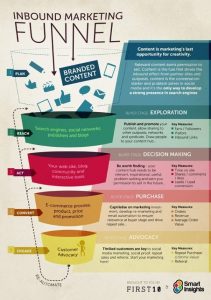How does affiliate marketing work?
 To those on the outside, affiliate marketing can seem like a black box. It’s inner workings are mysterious to most marketers and in many companies it’s not treated with the same seriousness as other channels. Some marketers, only familiar with the bad reputation acquired by some industry players in the 2000s, deride it as a source of spam and little more.
To those on the outside, affiliate marketing can seem like a black box. It’s inner workings are mysterious to most marketers and in many companies it’s not treated with the same seriousness as other channels. Some marketers, only familiar with the bad reputation acquired by some industry players in the 2000s, deride it as a source of spam and little more.
The truth is much more complicated. It’s true that affiliate programs can be sources of phantom revenue and off-brand promotion. But managed properly, they can also make up 10-20% of online revenue and have an ROI among the highest of any online channel. CMOs are realizing that affiliate marketing can be an important part of their arsenal and are integrating the channel into their overall marketing strategies.
This series is designed as an introduction to affiliate marketing, outlining what it is and general best practices for getting the most out of your program.
What Is Affiliate Marketing?
Essentially affiliate marketing involves a merchant paying a commission to other online entities, known as affiliates, for referring new business to the merchant’s website. Affiliate marketing is performance-based, which means affiliates only get paid when their promotional efforts actually result in a transaction.
Affiliates
Affiliates can be any manner of site, but generally they tend to be bloggers or other content sites related to the merchant’s industry.
Affiliates work to introduce their visitors to the merchant’s brand. They might write a post about a new product or promotion on the merchant’s site, feature banner ads on their site that drive people to the merchant’s site, or offer visitors a special coupon code. If people come from that affiliate’s site and make a purchase, that affiliate gets paid.
Traditionally many affiliate programs were comprised of coupon and loyalty sites. As the industry matured, content bloggers came to take a more prominent place in many programs. Innovative programs are stretching the definition of an affiliate even more, partnering with schools, nonprofits, and individual professionals.
Payments
One of the reasons affiliate marketing can provide a higher ROI than other channels is because it’s performance-based. Merchants only pay for actual customers, not just visits. This gives affiliate marketing a big advantage over other channels, such as PPC, where it’s easy to spend a ton of money on clicks without producing any actual conversions.
When there are multiple affiliates involved in one transaction, payment gets much more complicated. Sometimes it’s even possible for affiliates to jump in at the last minute and claim commissions for customers brought in by other affiliates. Successful programs use multi-channel attribution to ensure the affiliates that create the most value get paid the most.
Networks
Affiliate programs are organized and administered through a variety of affiliate networks. Some programs choose to work on multiple networks while others are consolidated on just one. Most major affiliates work with multiple networks.
The network uses cookies to track a customer’s progress from the affiliate’s website (or multiple affiliates’ websites) through the merchant’s shopping cart. The network then automatically pays out commissions to affiliates based on the rules set by the merchant.
Management
Some merchants manage their affiliate programs in-house, others turn management over to an external agency, or OPM (outsourced program management).
Whoever is managing the program does the work of recruiting quality affiliates, getting them engaged, finding ways for them to promote the merchant, and valuing the ones that bring in incremental revenue.
As you can see, affiliate marketing is a complex mosaic of many different partners and moving parts. When all of them are clicking, it can be a great source of new customers and an effective way to put the brand in front of new eyes.
Business Articles | Business 2 Community
(341)







